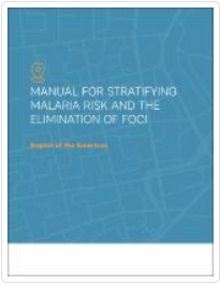This manual explains how to implement measures to achieve malaria elimination and prevent its reestablishment by increasing the intensity and quality of interventions, reorienting initiatives, reducing delays that favor transmission, and ensuring adequate monitoring to adjust interventions. In this regard, the first suggested step is to stratify the territory - so that interventions and population groups can be planned and prioritized - and then implement diagnosis, treatment, investigation and response (DTI-R) actions as a key strategy aimed at effectively eliminating the disease and preventing its reestablishment in all strata. In addition, the document seeks to operationalize the concept of "surveillance as an intervention" promoted by the World Health Organization through the Global Technical Strategy for Malaria 2016-2030 and highlights the importance of communities having access to early diagnosis and treatment. Finally, the manual also includes management and monitoring aspects that must be taken into account to eliminate the foci with transmission. |

